- All
- Nursing
- EMS
- Medicine
- Hospital
Nursing schools first adopted simulation to teach fundamental patient care and assessment skills. Today, they are creating complex, interdisciplinary scenarios mirror real-life and involve students from different specialties. Meanwhile, hospitals are saving time and reducing turnover by using simulation for nurse onboarding, assessment and retraining for new units. With a newly updated Program for Nursing Curriculum Integration (PNCI v5), more than 250 evidence-based training scenarios, and state-of-the-art patient simulation, Bouresly International allows both learners and professionals to suspend disbelief and immerse themselves in training that challenges their knowledge, abilities and critical thinking.
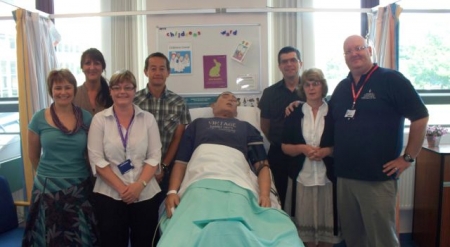
The University of Huddersfield, Huddersfield, United Kingdom
Watching her grandchild at play, Angela Hope, senior lecturer and practice and skills coordinator for the University of Huddersfield’s School of Human and Health Sciences, was struck by how much we humans learn through play. “Children practice simulation when they play and then they learn to socialize around that,” Hope says. “Our nursing students often say that learning through simulation is simply fun. We have actually published articles about this.”
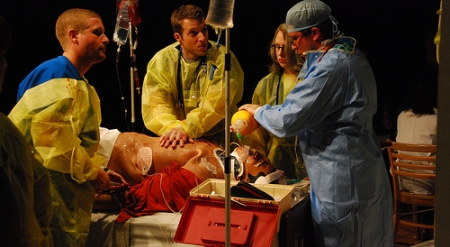
Faulkner State Community College, Alabama, USA
In a dark auditorium packed with more than 1,000 high school and college students, all eyes are transfixed on an emergency room reenactment. A medical team works to resuscitate a 17-year-old who was texting while driving and has suffered multiple injuries. As the teen’s sister stands by his side and the mother wails for her son, the emergency room nurse delivers devastating news. In the final scene, the team zips the teenager into a body bag and wheels him away.
Emergency medical responders are using patient simulation today to practice lifesaving skills that require precision and speed, such as airway management. They’re creating interdisciplinary disaster scenarios to improve communications among different response teams. They are leading students through golden hour scenarios, covering all aspects of patient care from the point-of-injury to transport to the operating room. CAE Healthcare offers the most authentic training tools for the rigors of emergency medical response. The Bouresly International line of patient simulators and validated scenarios challenge the trainee’s clinical and critical thinking skills, providing the best possible preparation for emergency care without any risk to real patients.
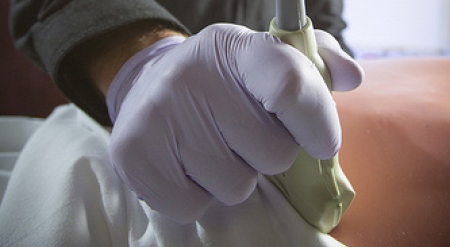
WAKEMED CENTER FOR INNOVATIVE LEARNING, NORTH CAROLINA, USA
Over the past few decades, EMS providers have rapidly adopted hospital technologies-- from pulse oximetry to 12-lead ECG monitoring to capnography — that have allowed emergency responders to capture more accurate patient information and deliver better care. Amar Patel, director of the WakeMed Center for Innovative Learning, which is part of WakeMed Health and Hospitals in Raleigh, North Carolina, USA, believes that the next wave of technology for EMS will be ultrasound. “Ultrasound can help us manage and treat patients’ medical trauma more effectively,” says Patel. “It’s a tool that we need to embrace.”
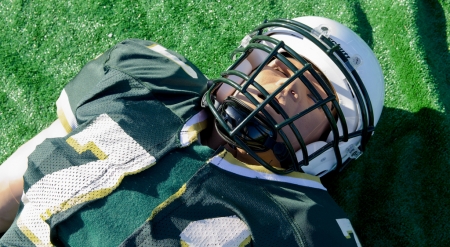
UNIVERSITY OF SOUTH FLORIDA ATHLETIC TRAINING EDUCATION PROGRAM, FLORIDA, USA
As college football season was gearing up in 2011, CAE Healtcare's iStan patient simulator joined the University of South Florida Bulls for a one-time, interdisciplinary simulation. Dressed in a full football uniform, iStan suffered a rare but life-threatening spinal injury on the field. The entire sports medicine team responded.
From anesthesia practice to point-of-care ultrasound to laparoscopic surgery, medical schools incorporate simulation into curriculums to provide the most current training for residents, students and even undergrads. They are using state-of-the-art simulation to prepare tomorrow’s physicians for a rapidly advancing healthcare environment. Medical school faculty are conducting research with simulators to assess new training methods. From laparoscopic surgery to point-of-care ultrasound to anesthesia delivery, Bouresly International delivers state-of-the-art simulation solutions that can meet the challenges of resident training, professional certification and competency assessment for physicians.

USC KECK SCHOOL OF MEDICINE, CALIFORNIA, USA
Before 2010, Assistant Professor of Clinical Anesthesiology Catherine Rodziewicz had never operated a human patient simulator. But Dr. Rodziewicz had to quickly adopt simulation training when the American Council for Graduate Medical Education (ACGME) revised the program requirements for Anesthesiology. New requirements by the ACGME mandate residents to participate in at least one simulated clinical experience a year. As a result, Dr. Rodziewicz’s Department Chair at the University of Southern California Keck School of Medicine asked her to incorporate high fidelity simulation into her teaching.
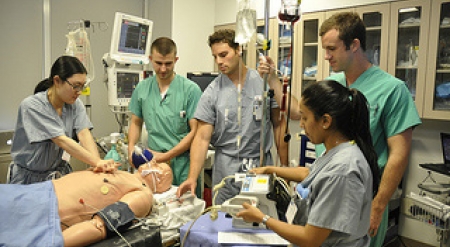
MOUNT SINAI SCHOOL OF MEDICINE HELPS CENTER NEW YORK CITY, USA
The confrontational surgeon, the harried nurse and the headstrong resident are not part of most formal simulation scenarios. Yet one or all of them participate in mission-critical simulations at the Mount Sinai School of Medicine HELPS (Human Emulation, Education and Evaluation Lab for Patient Safety) Center in New York City. Dr. Adam Levine, director of the HELPS center, says the beauty of these improvised characters is they can enter the scenario at the most inopportune moment to unnerve the participants, distract with a question or disrupt with a potentially fatal error.
One of the biggest challenges for hospitals and healthcare organizations is assuring that clinical staff provide competent, safe patient care. Today, forward-thinking hospitals are incorporating simulation into everyday practice, to assess performance, onboard new staff, train existing staff on new procedures and tools, develop rapid response teams and improve overall patient safety.
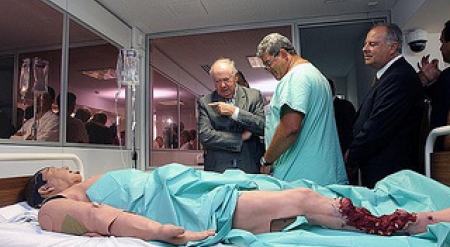
MADEIRA CLINICAL SIMULATION CENTER AT NÉLIO DE MENDONCA HOSPITAL, MADEIRA, PORTUGAL
In September, Portugal’s third simulation lab to integrate high-fidelity simulators opened in Madeira. Situated in the Atlantic Ocean between Europe and Africa, Madeira is a Portuguese Island that has invested greatly in its regional health system. The Madeira Clinical Simulation Center will focus on “train the trainer” activities for trauma and disaster management, emergency medicine, critical care, anesthesia and obstetric and pediatric emergencies.
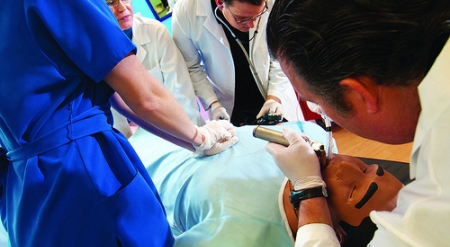
STUDY: ISTAN SIMULATIONS IMPROVE CODE BLUE RESPONSE TIME
Kelley Huseman MSN, RN-BC, spent 20 years as a critical care and intensive care nurse before joining a small community hospital in Pennsylvania, USA as a professional development specialist. One difference she quickly noted at the 130-bed Ephrata Community Hospital was the rare occurrence of a few code blues each month, far fewer than Huseman had seen during her nursing career. “I observed a few codes and realized they weren’t real smooth codes like I was used to,” Huseman said. “I thought if they could just practice more, they would get better at it.”
